New Irrefutable Evidence Found
On November 30, the Memorial Hall held a press conference about cultural relics and historical materials collected in 2022 as new evidence related to the Nanjing Massacre. From January to November 2022, a new batch of 453 important cultural relics and historical materials was added to the collection of the Memorial Hall. Among them were a battlefield log written by a Japanese soldier and photos of the Japanese army’s Unit Ei 1644.
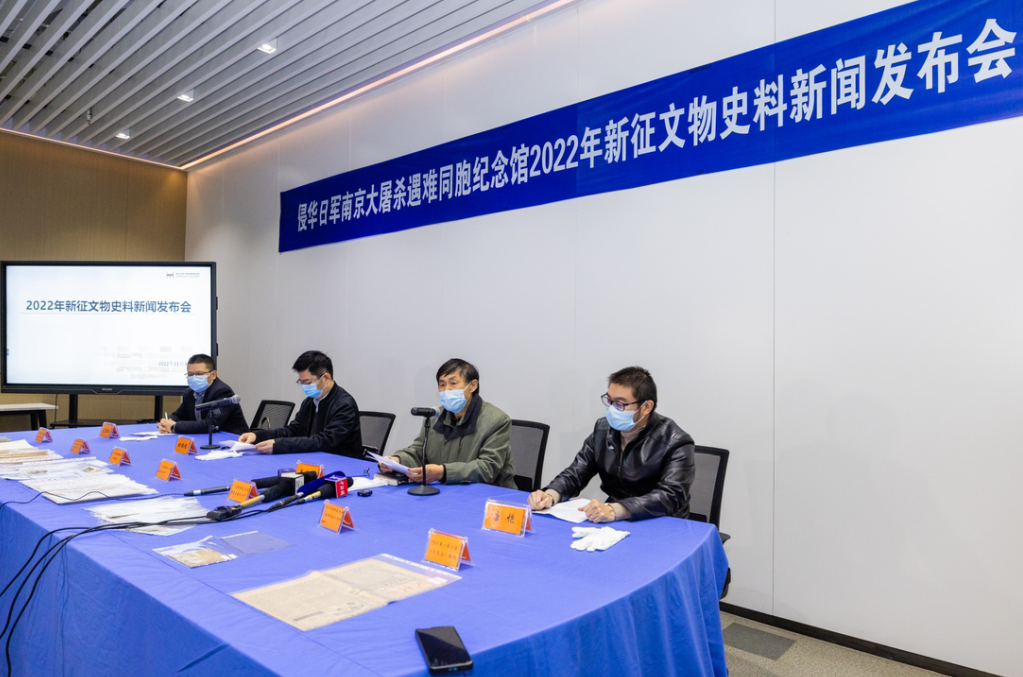
In 2022, upon request of the Memorial Hall, Japanese friend Satoshi Daito, abbot of Enkoji Temple in Japan's Aichi Prefecture, continued to collect historical materials related to the Nanjing Massacre in Japan, and collected 51 valuable items. They included significant historical materials like the original battlefield log of Japanese soldier Jun Arai, battlefield logs of the 11th Detachment of the 36th Infantry Regiment of the 9th Division of the invading Japanese army, photos of the Japanese army’s Unit Ei 1644, and drama cards of education for children. Overcoming the impact of the COVID-19 pandemic, the Memorial Hall transported the new batch of historical materials into its collection with huge support from Xinhua News Agency and Spring Airlines.
New Irrefutable Evidence of Japan’s “Sex Slaves” System

The battlefield log written by Japanese soldier Jun Arai
The battlefield log of Japanese soldier Jun Arai collected this time was an original of the diary kept by the soldier. He recorded his experiences from October 12, 1937 to September 23, 1938, as the troops boarded a ship in Japan, joined the battle of invading China, and were stationed in places including Shanghai, Nanjing, Wuxi, Jiaxing, and Zhenjiang. His diary included important contents about receiving and curing wounded soldiers in the Japanese army, how the Japanese troops plundered things and set up Sex Slaves stations, and how Chinese soldiers strongly defended against the Japanese soldiers. In the diary for January 1, 1938, he described how the Japanese army set up Sex Slaves stations in Nanjing. “Sex Slaves stations were set up today. With 1.5 or 1 Japanese yen for soldiers of different ranks, we can stay for 30 minutes. The station has always been full.” This was the earliest record about when Japanese troops set up “Sex Slaves” stations in Nanjing after they established the “Sex Slaves” system.
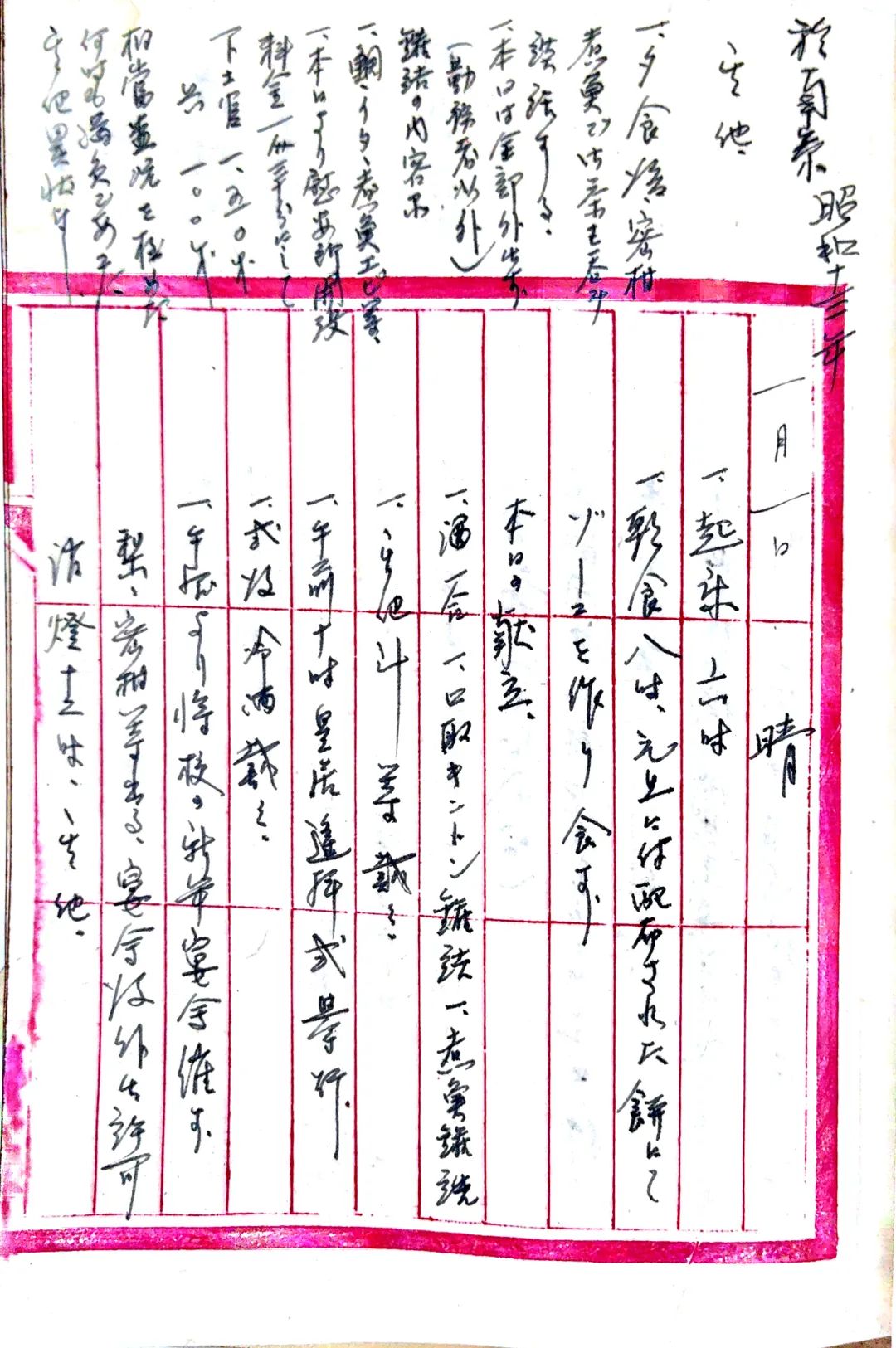
A part of the diary of Japanese soldier Jun Arai for January 1, 1938
According to Meng Guoxiang, a professor at Nanjing Medical University and an expert on the history of Japanese aggression against China, the “Sex Slaves” system was a large-scale sexual and violent crime committed by the Japanese army as well as an institutional act of the then Japanese government. The system, which trampled on humanity and desecrated civilization, is despised by the international community. The “Sex Slaves” question has become a touchstone of whether Japan is sincere enough and makes enough efforts to give a response regarding the nature of aggression of the war and to face the future. However, the Japanese right-wing forces have strongly denied it, and some Japanese politicians have shown vague and perfunctory attitudes on this issue, Meng said at the press conference, adding that the diary and other historical materials found are the most powerful counterattack. During the war, the Japanese army went out of its way to establish numerous “Sex Slaves” stations in Nanjing. Earlier writings about the resolution to set up such stations came from the diary of Shanghai Expeditionary Army Deputy Chief of Staff Toshimichi Uemura, who wrote in his diary entry of December 28, 1937 that “bad behavior among the troops is daily increasing,” he had the second office of the general staff headquarters “convene officers from all units to give reports on this matter.” That same day, Uemura deliberated the “Plan on Establishing Sex Slaves Stations in Nanjing” submitted by the second office.
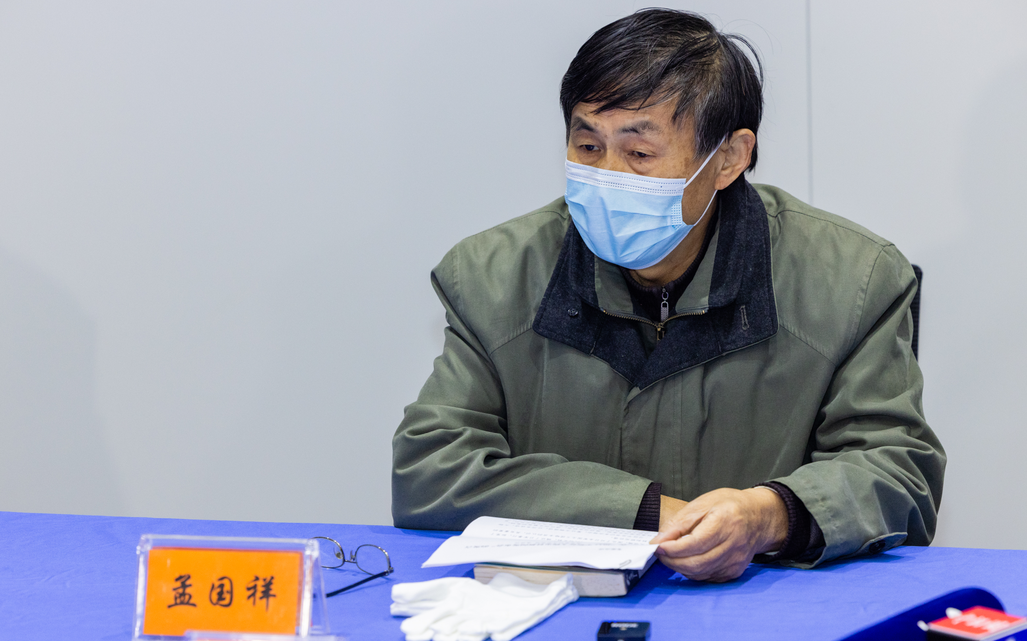
The knowledge of Sex Slaves stations in Nanjing has mainly relied on the memories of the victims, some Japanese archives, and the results of Japanese researchers, while the specific time of its establishment and its operational details recorded in the diary will be beneficial to promote research on the Japanese army’s “Sex Slaves” system in Nanjing, Meng said.
Latest Evidence of Germ Warfare by Japanese Army Disclosed
Daito also helped the Memorial Hall collect more than 60 photos of the Japanese army’s Unit Ei 1644. After seizing Nanjing, the Japanese troops established Unit Ei 1644, also called tama butai, in April 1939, in the former location of former Central Hospital (today’s PLA Eastern Theater Command General Hospital). The Japanese army claimed it was used as the Epidemic Prevention and Water Supply Department, but in fact the organization engaged in large-scale research and experiments on germ warfare and gas warfare. Of the photos collected, four showed the department was holding a “Mummers Parade” activity in Nanjing, with signs clearly showing Unit Ei 1644, and another four showed offices used by the department in Nanjing, group photos of Japanese soldiers in front of the offices, and performances celebrating the first anniversary of the establishment of the unit.
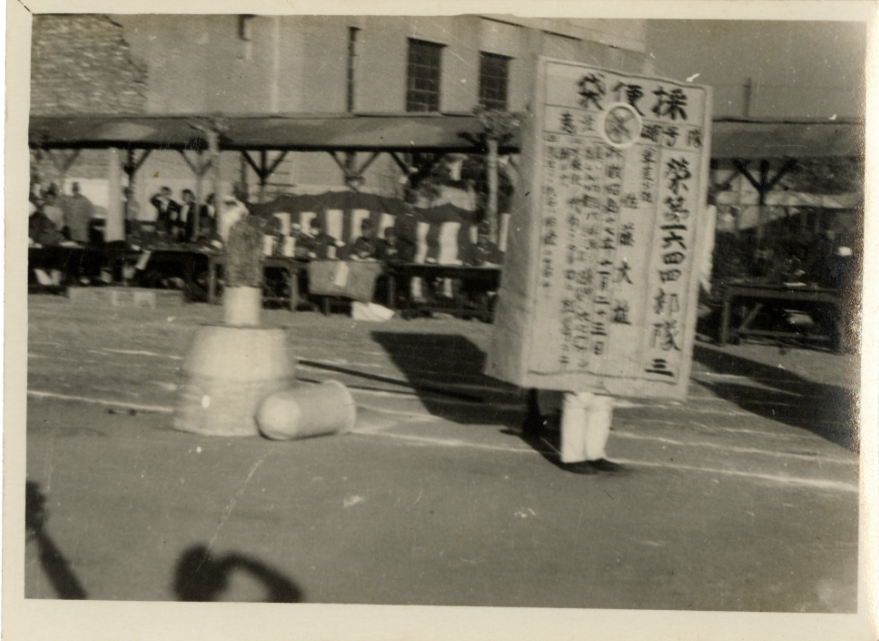
A photo shows the Japanese army’s Unit Ei 1644 was holding a “Mummers Parade” activity in Nanjing, with a sign clearly showing Unit Ei 1644
According to Meng, Unit Ei 1644 in Nanjing was as notorious as Unit 731 and committed heinous crimes of performing germ experiments on human beings in China, but so far China has gathered little information on them, not to mention to relevant photos, because those experiments were conducted secretly and relevant data were later destroyed by the Japanese army. Now this gap can be filled as the photos collected this time were never seen before, and they can be mutually verified with the discovery of the remains of the victims of germ experiments performed by Unit Ei 1644 and relevant studies. That will be helpful for more detailed research. In December 1998, 41 skulls were found on the construction site near PLA Eastern Theater Command General Hospital. Through research and identification, experts in multiple fields confirmed they belonged to the victims of germ experiments performed by Unit Ei 1644.
New Battlefiled Logs Recording Japanese Aggression against China
The 36th Infantry Regiment of the 9th Division of the Japanese army was among the main troops occupying Nanjing and perpetrating a massacre in the city. The regiment arrived outside Guanghua Gate in Nanjing in the small hours of December 9, 1937 and then launched an attack. After days of fierce battles, the regiment finally occupied Guanghua Gate at 5 am on December 13. Later, the Japanese soldiers tracked down, arrested and slaughtered unarmed Chinese soldiers and civilians, raped women, plundered things, and burnt down buildings in the city and outside Guanghua Gate, committing numerous crimes.

Battlefield logs from March 30, 1936 to April 30, 1937
The battlefield logs this time recorded the battles between the 11th Detachment of the regiment and Chinese anti-Japanese armed forces as well as their guard duties in places like Yanshou county under the puppet Manchurian regime from March 30, 1936 to April 30, 1937. Together with the battlefield logs between October 1937 and June 1938 collected by the Memorial Hall in 2021, they added to the military archives kept by the same troop in different time periods.
“This detachment was not only one of the main troops that attacked Nanjing and perpetrated a massacre in the city. They also participated in actions to ‘clean up’ Chinese anti-Japanese armed forces in northeast China before 1937. The battlefield logs collected this time will provide more insights into the operation and development of grassroots Japanese army and help us clearly understand the history of Japan’s aggression in China on the whole. They are of significant value for academic research,” Meng said.
Evidence of Japanese Militarism Education Discovered
Daito also collected “The Fall of Nanjing” drama cards of education for children issued by Japan in 1942, which serve as strong evidence that the then Japanese government promoted militarism education among people. These cards showed comic strips on one side and scripts on the other side. The comic strips depicted the scenes of battlefields, celebrating the fall of Nanjing, and Japanese troops marching into Nanjing, among others. These cards were publicly issued by the Greater East Asia Cultural Drama Society of Japan as educational materials for children.
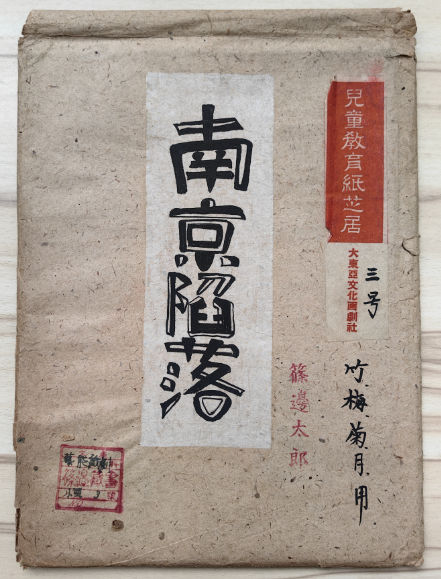
“The Fall of Nanjing” drama cards of education for children
Tang Kai, a private collector in Nanjing, also helped the Memorial Hall collect some cultural relics and historical materials, including an album that was compiled and published in 1938 to record the fall of Nanjing, and a Chinese-language newspaper on January 6, 1938 that published an article about the Battle of Nanking.

